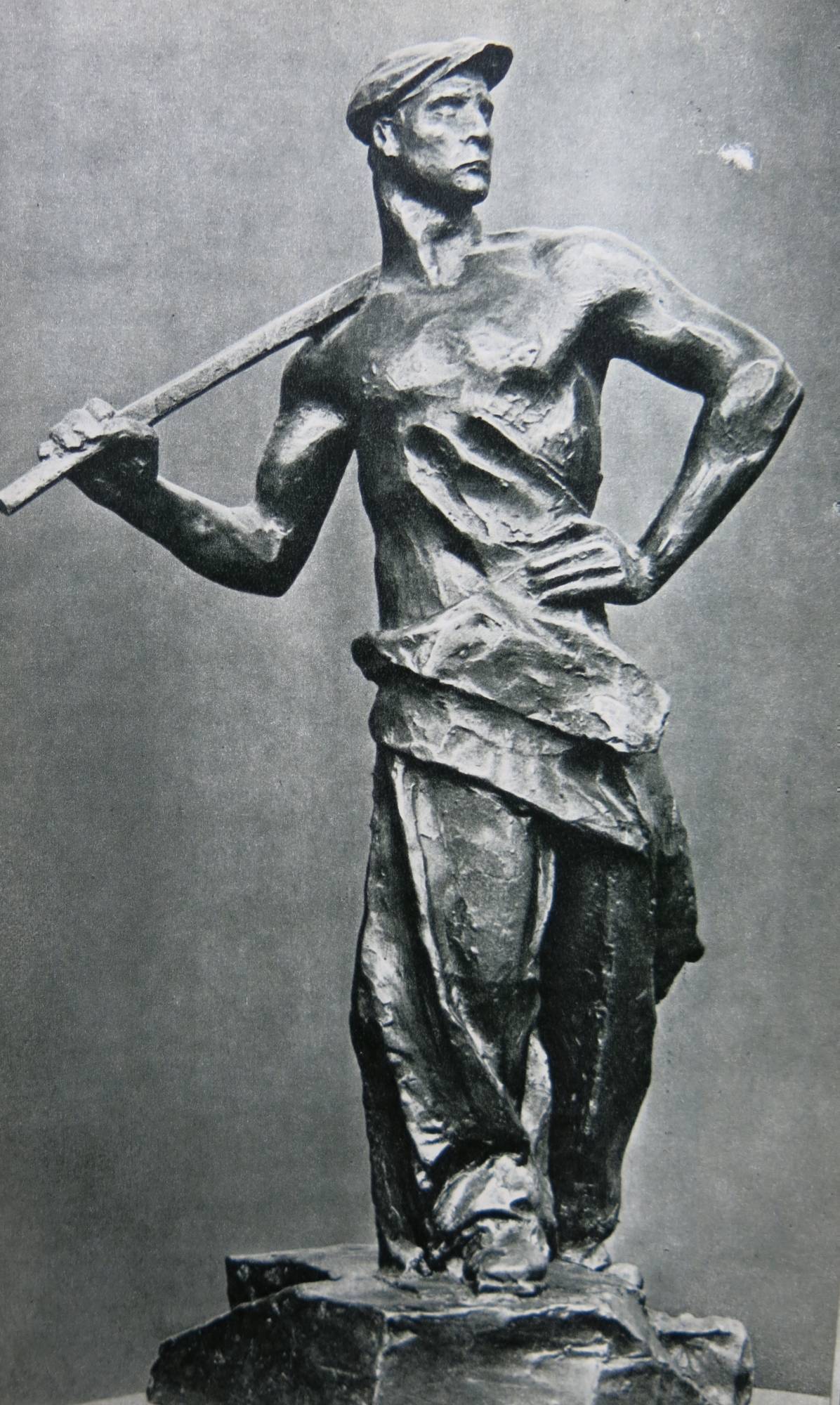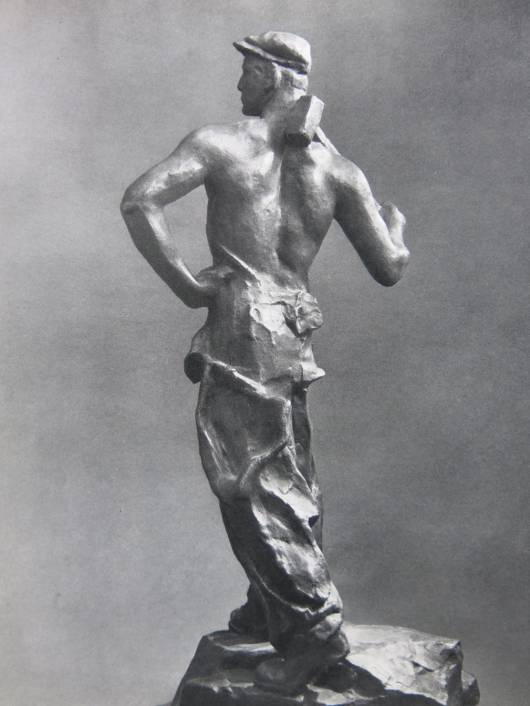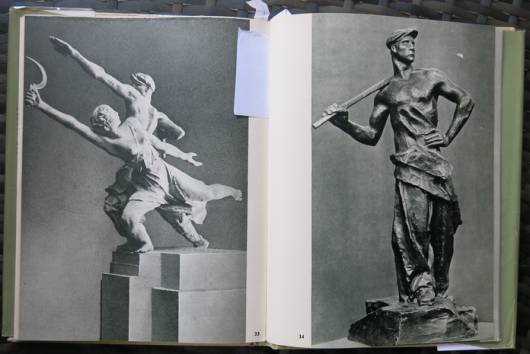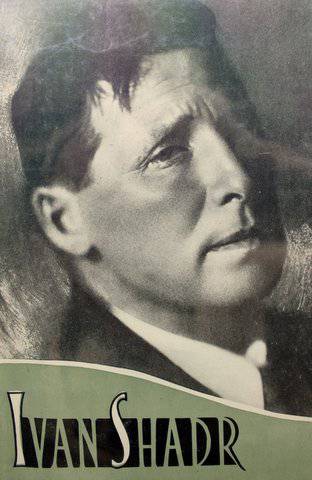Worker with a Hammer

Shadr, Ivan
1887 - 1941
Worker with a Hammer
Bronze
58cm high
1936
PROVENANCE:
Private Collection, Moscow
LITERATURE:
Ivan Shadr, by Yuri Kolpinsky, Soviet Arts - Foreign Languages Publishing House, Moscow, p. 47, illustrated plate 34.
Tretyakov Gallery, Sculpture Catalogue, Vol 2, p. 521, No. 1721, illustated p. 432.
Certificate Luidmilla Martz, Curator of Sculpture, Tretkyakov Gallery, Moscow.
'Worker with a hammer,' one of best known sculptures from Soviet period Russia, was originally modelled in plaster by Shadr in 1936. A man wearing a cap, bare-chested, and holding a hammer resting casually on his shoulder, is depicted looking to his left with a hand on his waist. He has one foot higher than the other but, despite the tension implied in the pose, is actually stationary.

Worker with a hammer - rear view
This sculpture, widely discussed in all the books on Shadr, is summarized by Shadr's biographer Yuri Kolpinsky (op.cit.) as, "Worker with a Hammer' is strength triumphant." In 1951 the Tretyakov Gallery requested a version of this sculpture and a couple were cast including our version. The one that went to the Tretyakov carries their inventory number 30682 and the catalogue provides the comment, "Sketch model for a monument (never erected) in Voroshilovgrad to the heroes of the defense of Lugansk. "
Shadr is one of the rarest and most famous of the Soviet Sculptors. He imparts a dramatic tension into his work. Worker with a hammer is a powerful example of Soviet monumentality and a rare survival of a work by Shadr outside of a Russian Museum.
Koplinsky's book on Shadr

Ivan Shadr (Russian: Иван Шадр), pseudonym of Ivan Dmitriyevich Ivanov (Russian: Иван Дмитриевич Иванов) (11 February [O.S. 30 January] 1887, Shadrinsk, now Kurgan Oblast — 3 April 1941, Moscow) was a leading Russian/Soviet sculptor and medalist who took his pseudonym after his hometown of Shadrinsk.
Shadr studied at the Artistic Industrial School in Yekaterinburg from 1903 to 1907, and from 1907 to 1908 at the Drawing School of the Society for the Encouragement of the Arts in St Petersburg where the famous Nicholas Roerich was his teacher. He furthered his education under Auguste Rodin and Emile-Antoine Bourdelle in Paris (1910–1911), and in Rome (1911 – 1912).
Shadr's early works, such as the project for the memorial to World Suffering (1916), were designed according to the principles of Art Nouveau. After the 1917 Revolution he was an active participant in the execution of the Monumental Propaganda Plan, in particular, he sculptured reliefs depicting the Socialist ideological leaders Karl Marx, Karl Liebknecht, and Rosa Luxemburg, as well as some sixteen separate monuments to Vladimir Lenin.
In these years the characteristics of Shadr’s style were consolidated: an elevated, romantic organization of the figures and an emotional, dynamic composition. Among his most famous and characteristic works are sculptures Stone as a weapon of the proletariat (1927) and Woman with an Oar(1936).
In the 1920s, Shadr together with sculptor Piotr Tayozhny came up with one of the first designs of the Order of Lenin, the highest Soviet award. Shadr also worked forGoznak, including on designing new Soviet money that included the symbols of that time: a worker, a peasant and a Red Army soldier. Those sculptures remarkable for their vigorous and dynamic typical characters can be seen nowadays in the Russian Museum (plaster casts) and in the Tretyakov Gallery (bronze sculptures).
Shadr died in wartime Moscow and in 1952 was awarded the Stalin Prize posthumously. He's buried in Novodevichy Cemetery in Moscow, where his sculptural work can also been seen at the grave of Nadezhda Alliluyeva, the second wife of Stalin, and the grave of theater director Vladimir Nemirovich-Danchenko.



